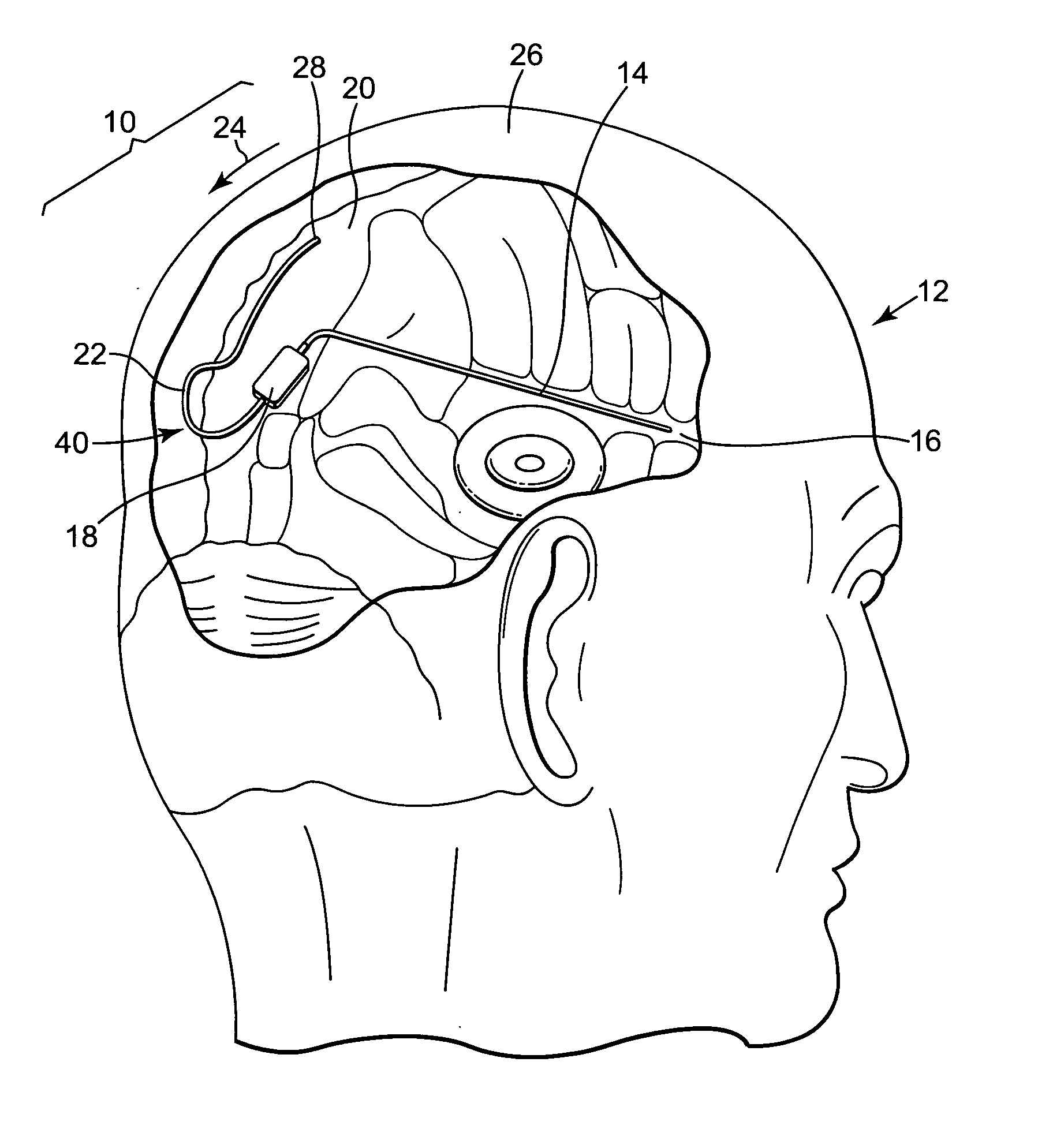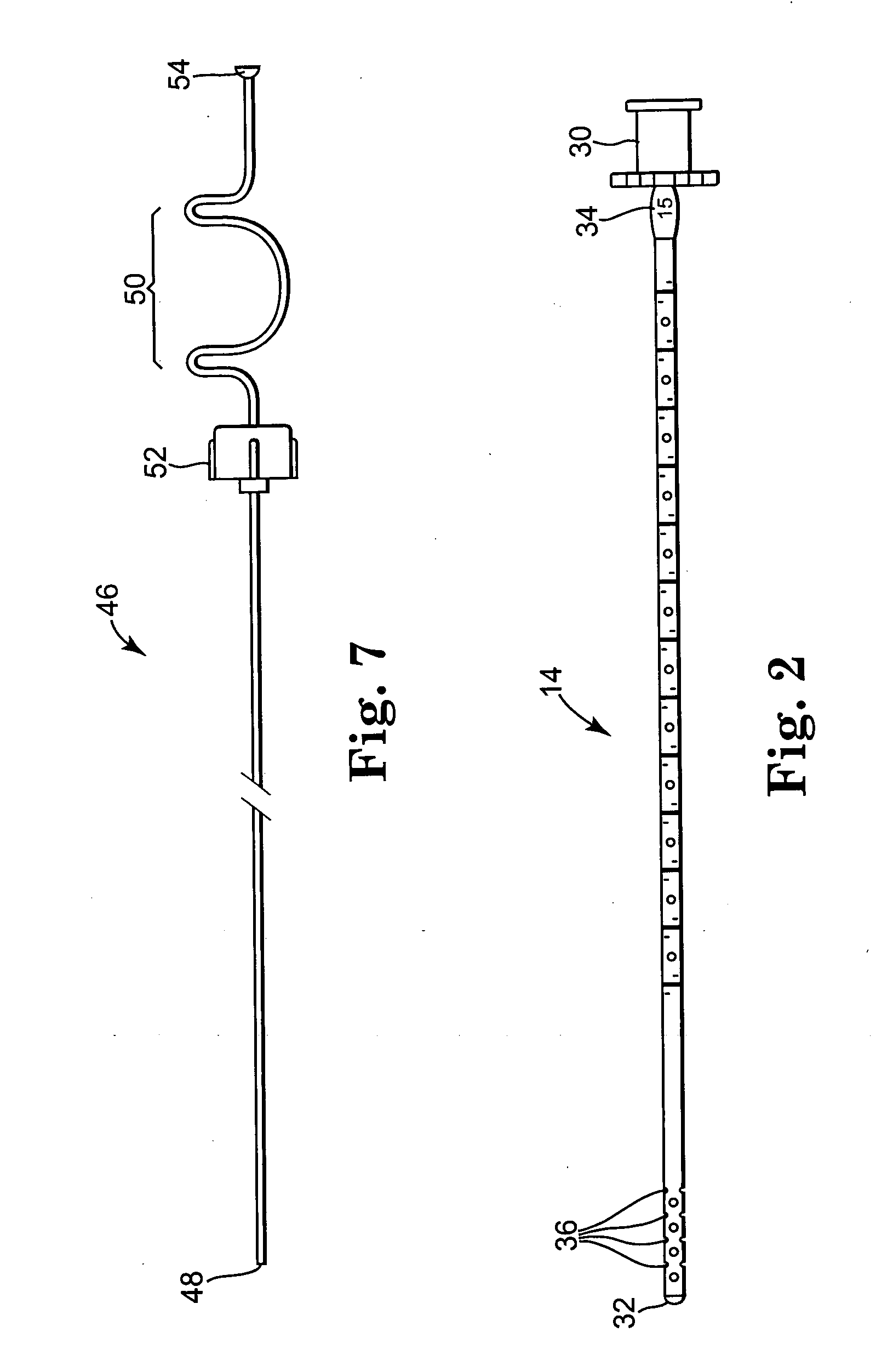Apparatus and method for retrograde placement of sagittal sinus drainage catheter
- Summary
- Abstract
- Description
- Claims
- Application Information
AI Technical Summary
Benefits of technology
Problems solved by technology
Method used
Image
Examples
Embodiment Construction
[0030] The various embodiments of the present invention can be understood by reference to the shunt system 10 illustrated in FIG. 1 which shows the ventricular to sagittal sinus shunt system 10 in place in a patient 12. Ventricular catheter 14 has been inserted through a burr hole (not shown) into the lateral ventricle 16 of patient 12. Ventricular catheter 14 is coupled to valve 18 which controls the flow of CSF from lateral ventricle 16 to sagittal sinus 20. Valve 18 is also coupled to sinus catheter 22 shown inserted through another burr hole (also not shown) into the superior sagittal sinus 20.
[0031] Shunt system 10 allows excess CSF present in lateral ventricle 16 to flow through ventricular catheter 14, valve 18 and sinus catheter 22 into the blood stream of sagittal sinus 20 where the excess CSF can be reabsorbed into the body. The vertical distance between the location of ventricular catheter 14 and sinus catheter 22 is small compared with vertical distance usually associat...
PUM
 Login to View More
Login to View More Abstract
Description
Claims
Application Information
 Login to View More
Login to View More - R&D
- Intellectual Property
- Life Sciences
- Materials
- Tech Scout
- Unparalleled Data Quality
- Higher Quality Content
- 60% Fewer Hallucinations
Browse by: Latest US Patents, China's latest patents, Technical Efficacy Thesaurus, Application Domain, Technology Topic, Popular Technical Reports.
© 2025 PatSnap. All rights reserved.Legal|Privacy policy|Modern Slavery Act Transparency Statement|Sitemap|About US| Contact US: help@patsnap.com



